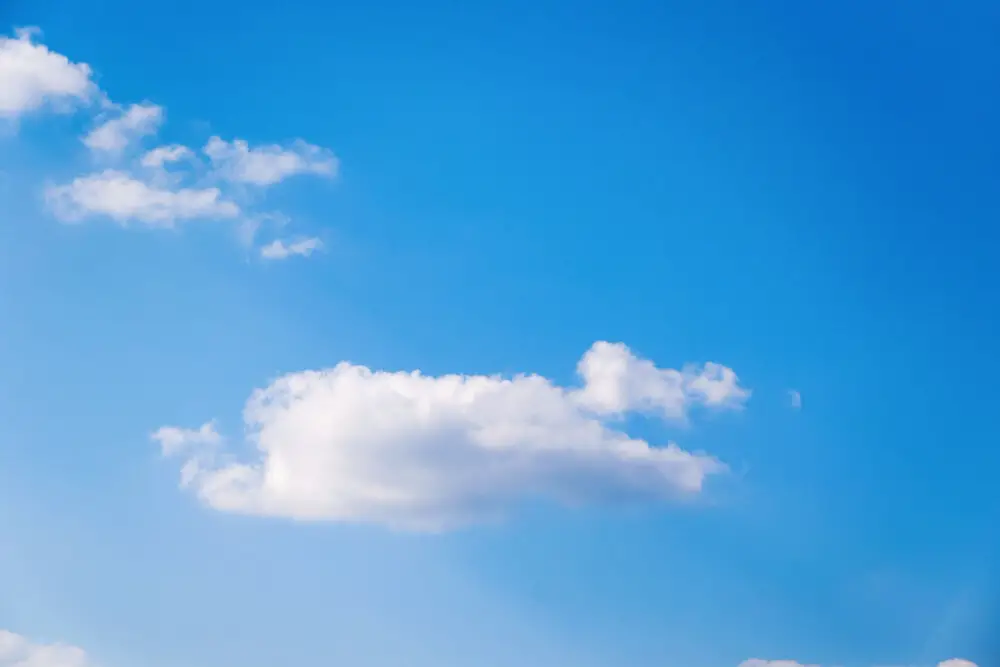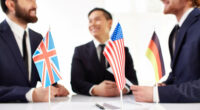Dispersion refers to the separation of light into different wavelengths, while scattering involves the redirection of light in various directions.
Understanding dispersion and scattering is crucial for comprehending the behavior of light in various materials and environments. These two fundamental concepts in physics involve the separation and redirection of light. But what is the difference between dispersion and scattering?
Dispersion refers to the splitting of white light into its constituent colors as it passes through a medium. This phenomenon creates a spectrum of colors, similar to what we see in a rainbow. On the other hand, scattering involves the deviation of light rays from their straight trajectory when they encounter obstructions in the medium, such as particles or surfaces.
While dispersion results in the separation of light into different colors, scattering does not involve color separation but rather random redirection of light rays in various directions. Dispersion is responsible for the colorful patterns seen when light passes through a prism, while scattering affects the color of the sky during the day.
Key Takeaways:
- Dispersion refers to the splitting of white light into its constituent colors, while scattering involves the random redirection of light rays.
- Dispersion creates a spectrum of colors, while scattering does not involve color separation.
- Dispersion is responsible for the rainbow effect, while scattering affects the color of the sky.
Now that we have a basic understanding of dispersion and scattering, let’s dive deeper into each concept and explore their fascinating aspects.
Definition of Dispersion and Scattering
In the realm of physics, dispersion and scattering are two fundamental concepts that shed light on the behavior of light. Understanding dispersion and scattering is crucial for comprehending the intricate ways in which light interacts with matter.
Dispersion:

Dispersion refers to the phenomenon of white light being split into its constituent colors, known as the visible spectrum. As light passes through a medium, different wavelengths of light travel at varying speeds, causing them to bend or refract at different angles. This bending of light creates the beautiful array of colors we see when light passes through a prism. The process of dispersion allows us to witness the vibrant colors of a rainbow or the separation of light into its components within a medium.
Scattering:

Scattering, on the other hand, involves the diversion of light rays from their original trajectory due to interactions with particles or irregularities in the medium. Unlike dispersion, scattering does not separate light into different colors. Instead, it results in the random redirection of light rays in various directions. Scattering contributes to a myriad of natural phenomena, such as the blue color of the sky and the striking colors displayed by certain biological structures, like butterfly wings and feathers.
By understanding dispersion and scattering, scientists and researchers can gain valuable insights into the behavior of light and its interactions with the world around us. Whether it’s the enchanting dispersion of light through a prism or the mesmerizing colors exhibited by scattered light, these phenomena offer a fascinating glimpse into the intricate nature of light and its properties.
How Dispersion and Scattering Affect Light
Dispersion and scattering play significant roles in shaping the behavior of light. Understanding the differences between these phenomena is crucial to gaining insights into the fascinating world of physics.
Dispersion occurs when white light passes through a medium and gets split into its constituent colors, forming a beautiful spectrum. This remarkable phenomenon is often observed when light passes through a prism or when sunlight interacts with raindrops, creating the mesmerizing display of colors we commonly know as a rainbow.
On the other hand, scattering influences the color of the sky during the day. It primarily affects blue light, which is scattered more than other colors by particles in the atmosphere. This scattering process is responsible for the captivating blue appearance of the sky that we all admire.
Let’s delve deeper into the distinctive effects of dispersion and scattering on light:
Dispersion: Creating a Spectrum of Colors
Dispersion is a captivating phenomenon that results in the separation of white light into its component colors. This process occurs as light passes through a medium and different wavelengths of light travel at different speeds, causing them to bend or refract at varying angles. The result is a magnificent array of colors that make up the visible spectrum.
To better understand the concept of dispersion, imagine the enchanting moment when sunlight passes through a prism, such as a glass or a crystal. As the light enters the prism, it undergoes refraction, bending at different angles depending on its wavelength. This refraction causes the separation of the light into its distinct colors, creating a visually stunning display.
Scattering: The Influence on Sky Color
Scattering is a mesmerizing phenomenon that impacts the color of the sky during daylight hours. It occurs when light rays encounter particles in the atmosphere, causing them to deviate from their original path. While scattering can happen to light of any color, blue light is more prone to scattering compared to other colors.
When sunlight enters Earth’s atmosphere, it interacts with tiny particles, such as molecules and dust. The shorter wavelengths of blue light tend to interact more with these particles, resulting in a higher probability of scattering. As a result, the blue light is scattered in different directions, allowing us to perceive a distinctly blue sky during the day.
While both dispersion and scattering have captivating effects on light, they are distinct phenomena that contribute to our understanding of the behavior and characteristics of light in different environments and materials.
Materials that Exhibit Dispersion and Scattering
Dispersion and scattering phenomena can be observed in various materials, each showcasing unique characteristics and effects on light. Understanding which materials exhibit dispersion and scattering is key to comprehending the behavior of light in different environments. Let’s explore some examples:
Glass
Glass is a material that exhibits dispersion when light passes through it. The different wavelengths of light bend at different angles and separate into their constituent colors, resulting in a beautiful display of the rainbow spectrum.
Water
Water is another material known for displaying dispersion. When light travels through water, it undergoes the same splitting effect as in glass, causing the colors to separate and create vibrant visual effects.
Gemstones
Gemstones, such as diamonds or rubies, are renowned for their dispersion properties. When light enters these gemstones, it scatters and separates into multiple colors, enhancing their natural beauty and brilliance.
Clouds and Fog
Scattering occurs in materials like clouds and fog due to the presence of suspended particles. As sunlight passes through the tiny water droplets or ice crystals in these atmospheric conditions, the light scatters in all directions, resulting in a diffuse and hazy appearance.
Dust and Particles
Dust particles in the air or other small particles suspended in different mediums can cause scattering as well. These particles randomly redirect light rays, creating visible beams in a room illuminated by sunlight or producing the mesmerizing effect of sun rays filtering through a canopy of trees.
Biological Structures
Nature provides numerous examples of materials that exhibit scattering. Biological structures like feathers and butterfly wings often contain microstructures that scatter light and produce stunning colors, contributing to the visual allure of these organisms.
Understanding the materials that exhibit dispersion and scattering allows scientists and researchers to delve deeper into the principles and applications of these phenomena. Exploring the unique properties of each material enhances our knowledge of light behavior and opens up new possibilities in various fields.
Measurement and Quantification of Dispersion and Scattering
Understanding dispersion and scattering is important for studying how light behaves in different situations. Dispersion happens when white light splits into different colors, and we can measure it using a tool called a spectrometer. This device looks at the different colors of light and how intense they are, helping scientists understand dispersion in different materials. On the other hand, scattering is when light gets redirected in various directions. Scientists can measure scattering by looking at how much light is scattered and in which directions it goes. Both dispersion and scattering can be studied using math equations, which help scientists understand how light behaves in different materials even more.
In simple terms, dispersion is when white light splits into colors, and scattering is when light gets redirected. Scientists use a spectrometer to measure dispersion and look at how much light scatters to understand scattering. Math equations also help them study these phenomena more deeply.
| Dispersion | Scattering |
|---|---|
| Splitting of white light into constituent colors | Random redirection of light rays |
| Quantified using a spectrometer | Quantified by measuring redirected light |
| Characterization of dispersion in different materials | Determination of scattering effect in a specific medium |
| Mathematical modeling to predict behavior | Mathematical analysis to understand random redirection |
Applications of Dispersion and Scattering
Dispersion and scattering play vital roles in a wide range of practical applications across various fields. These phenomena have become valuable tools for scientists, engineers, and researchers in understanding light behavior and developing innovative technologies.
Astronomy
The analysis of light dispersion in astronomy enables scientists to gain insights into the composition, temperature, and physical properties of celestial objects. By studying the specific wavelengths of light emitted or absorbed by stars, galaxies, and other astronomical phenomena, researchers can unravel valuable information about the universe’s structure and evolution.
Optics
Dispersion plays a crucial role in the design and development of lenses, prisms, and optical devices. By manipulating the angle of refraction and the distribution of wavelengths, optical engineers can effectively correct image aberrations and improve the performance of lenses. Prisms, which rely on dispersion to separate light, are essential components in spectroscopy, telecommunications, and imaging systems.
Technological Applications
Scattering is employed in several technologies to achieve specific effects:
- 1. Spectrometers: Spectrometers use scattering to analyze the composition of substances based on the scattered light’s frequency or wavelength distribution. This technique is invaluable in fields such as chemistry, environmental monitoring, and material characterization.
- 2. Lasers: Laser technologies utilize scattering effects to control light propagation. This enables the precise generation, manipulation, and transmission of laser beams, enabling applications in medicine, communication, and manufacturing.
- 3. LED Lights: Light-emitting diodes (LEDs) leverage scattering properties to enhance light diffusion, leading to improved illumination and color distribution. Such advancements enable the adoption of LED technology in various industries, including automotive lighting, displays, and general lighting.
Understanding dispersion and scattering principles is pivotal to advancing these applications and embracing future technological innovations.
Practical Applications of Dispersion and Scattering
| Field | Application |
|---|---|
| Astronomy | Analysis of celestial object composition |
| Optics | Lens design and prism-based systems |
| Technology | Spectrometers, lasers, LED lights |
The Relationship Between Dispersion and Scattering
Dispersion and scattering are two different ways that light behaves when it interacts with things around it. Dispersion is when light splits into different colors, like how a prism makes a rainbow. It happens because different colors of light move at different speeds when passing through something. Scattering, on the other hand, is when light gets redirected randomly, not splitting into colors like dispersion does. For example, when sunlight hits tiny particles in the sky, it scatters, making the sky look blue during the day.
While dispersion and scattering are related because they both involve how light moves through things, they’re not the same. Dispersion creates rainbows by separating colors, while scattering makes the sky look blue by redirecting light randomly. Both are important for understanding how light works in different situations and materials, helping scientists in fields like optics and astronomy study the world around us.
| Dispersion | Scattering |
|---|---|
| Separation of light into constituent colors | Random redirection of light rays |
| Occurs due to differing speeds of light wavelengths | Caused by interactions with particles or irregularities |
| Visible in phenomena such as rainbows | Evident in the color of the sky during the day |
| Can result in scattering | Can occur without dispersion |
Historical Discoveries of Dispersion and Scattering
The understanding of dispersion and scattering in physics has been shaped by significant historical discoveries. Two prominent figures who contributed to the study of these phenomena are Sir Isaac Newton and C.V. Raman.
In 1666, Sir Isaac Newton first discovered the concept of dispersion. During his experiments with prisms, he observed that white light could be separated into its component colors. This groundbreaking finding laid the foundation for further exploration and understanding of dispersion. Newton’s discovery revolutionized our understanding of light and its properties.
Another significant advancement in the field of dispersion and scattering came from C.V. Raman, an Indian scientist. In 1922, Raman observed the redirection of light by particles, a phenomenon known as scattering. For his remarkable work, Raman was awarded the Nobel Prize in Physics in 1930. His discoveries expanded our knowledge of light interactions with matter and opened up new avenues of research.
These historical discoveries by Newton and Raman have had a lasting impact on the field of physics, providing valuable insights into the behavior of light and its interactions with different materials.
| Scientist | Discovery | Year |
|---|---|---|
| Sir Isaac Newton | Dispersion of light | 1666 |
| C.V. Raman | Scattering of light | 1922 |
Calculation and Analysis of Dispersion and Scattering
Dispersion and scattering can be accurately calculated and analyzed using mathematical equations and models. These calculations provide valuable insights into the behavior of light in different media, aiding scientists and researchers in predicting and understanding the processes of dispersion and scattering.
Mathematical Equations for Dispersion
In the case of dispersion, mathematical equations take into account various factors such as the refractive index, wavelength, and angle of incidence. These equations allow us to determine the extent to which white light is split into its constituent colors when passing through a certain medium. By analyzing the values of these parameters, researchers can quantify and characterize the dispersion phenomenon.
Modelling Scattering Behavior
When it comes to scattering, mathematical models are employed to describe the random redirection of light rays caused by the presence of particles or irregularities in the medium. These models consider factors such as the size and shape of the scattering particles, their refractive index, and the wavelength of the incident light. By simulating these interactions, scientists can analyze the scattering behavior and gain a deeper understanding of its effects.
Experimental Validation
Although calculations and models provide valuable insights, experimental studies are essential for validating these theoretical approaches. Through experimental setups and measurements, scientists can observe and quantify the actual dispersion and scattering effects in different materials and environments. These experiments help confirm the accuracy of mathematical calculations and models, ensuring that the analysis of dispersion and scattering aligns with real-world observations.
Advancements in Technology
Technological advancements have enhanced the calculation and analysis of dispersion and scattering. Advanced spectrometers and imaging techniques allow for more precise measurements and observations. Additionally, computational algorithms and simulations enable researchers to simulate and predict dispersion and scattering behaviors in complex systems, providing valuable insights that were previously unattainable.
| Advantages of Calculation and Analysis | Benefits of Experimental Studies |
|---|---|
|
|
Combining calculation and analysis with experimental studies allows researchers to gain a comprehensive understanding of dispersion and scattering phenomena. This integrated approach drives advancements in various fields, including optics, materials science, and engineering, leading to the development of innovative technologies and applications.
Experimental Studies on Dispersion and Scattering
Experimental studies are very important for learning more about dispersion and scattering. Scientists use experiments to look closely at how light behaves when it passes through different materials. By doing experiments, they can check if their ideas are right and improve their mathematical models. Using different tools and setups, researchers can watch what happens to light when it goes through things, helping us understand how light works in different situations.
One way scientists study dispersion is by shining light through a prism or a diffraction grating. This lets them see how white light breaks into different colors, making a spectrum. They can measure the angles and strengths of these colors to understand dispersion better. Scattering studies use special instruments to see how light scatters in different materials. By doing these experiments, scientists learn more about how light moves and how it’s useful in things like making better lenses and understanding our atmosphere.
| Advantages of Experimental Studies on Dispersion and Scattering | Challenges of Experimental Studies on Dispersion and Scattering |
|---|---|
|
|
Advancements and Future Directions in Dispersion and Scattering Research
Research on dispersion and scattering is constantly evolving, with significant advancements being made in the field. Scientists are relentlessly exploring new materials, delving into complex interactions, and devising innovative methods to gain a comprehensive understanding of dispersion and scattering phenomena. By pushing the boundaries of knowledge, researchers are broadening our understanding of light behavior and paving the way for exciting future developments.
Advancements in Dispersion and Scattering Research
Advancements in dispersion and scattering research have unlocked new possibilities and revolutionized various fields. Researchers have made significant progress in:
- Developing advanced measurement techniques for precise characterization of dispersion and scattering phenomena
- Discovering novel materials with unique dispersion and scattering properties
- Improving the accuracy of mathematical models used for predicting dispersion and scattering behavior
- Exploring the fundamental principles underlying dispersion and scattering through experimental studies
These advancements have not only deepened our understanding of dispersion and scattering but also opened up opportunities for practical applications in diverse industries.
Future Directions in Dispersion and Scattering Research
The future of dispersion and scattering research holds immense potential for further breakthroughs and innovation. Scientists are actively pursuing new avenues of exploration and investigation. Some of the future directions in dispersion and scattering research include:
- Exploring the use of dispersion and scattering as a means of manipulating and controlling light for advanced optical technologies
- Investigating the interaction of dispersion and scattering with emerging materials, such as metamaterials and nanomaterials
- Enhancing the accuracy and sensitivity of measurement techniques to enable detailed analysis of dispersion and scattering effects
- Studying dispersion and scattering in complex environments, such as biological systems, to unravel new insights and potential applications
The advances and future directions in dispersion and scattering research will continue to shape our understanding of light and its interactions with matter. Exciting discoveries and innovations lie ahead, promising a future where dispersion and scattering play a pivotal role in a wide range of scientific and technological advancements.
Conclusion
Dispersion and scattering are two important concepts in physics that help us understand how light behaves. Dispersion happens when white light splits into different colors as it passes through something, like a prism or raindrops. On the other hand, scattering occurs when light rays change direction randomly after hitting particles or surfaces.
When dispersion occurs, it creates a rainbow of colors, like when sunlight shines through a prism. Scattering, on the other hand, makes the sky look blue during the day because blue light scatters more than other colors in the atmosphere. Scientists study dispersion and scattering to improve things like lenses and optical devices. They also use scattering in technologies such as lasers and LED lights. Ongoing research in these areas helps us learn more about light and how it interacts with the world around us.
FAQ
What is the difference between dispersion and scattering?
Dispersion refers to the splitting of white light into its constituent colors, while scattering involves the random redirection of light rays.
How are dispersion and scattering defined?
Dispersion is the separation of light into different colors as it passes through a medium, while scattering is the deviation of light rays from their straight path when they encounter obstructions in the medium.
How do dispersion and scattering affect light?
Dispersion splits white light into its component colors, creating a spectrum of colors, while scattering causes light rays to deviate from their original path and can change the color of the light.
Which materials exhibit dispersion and scattering?
Materials such as glass, water, gemstones, clouds, fog, dust, and biological structures can exhibit dispersion and scattering.
How can dispersion and scattering be measured and quantified?
Dispersion can be measured using a spectrometer to analyze the wavelengths and intensity of light. Scattering can be quantified by measuring the amount of light redirected in different directions.
What are the practical applications of dispersion and scattering?
Dispersion and scattering have applications in fields such as astronomy, optics, and technology, including analyzing celestial objects, designing optical devices, and utilizing spectrometers, lasers, and LED lights.
What is the relationship between dispersion and scattering?
While dispersion can result in scattering as light travels through a medium, scattering can also occur without causing dispersion.
Who made the historical discoveries of dispersion and scattering?
Sir Isaac Newton discovered dispersion in 1666, while Indian scientist C.V. Raman discovered scattering in 1922 and received a Nobel Prize in Physics for his work.
How are dispersion and scattering calculated and analyzed?
Mathematical equations and models are used to calculate and analyze the behavior of light in different media, considering factors such as refractive index, wavelength, and angle of incidence.
What do experimental studies reveal about dispersion and scattering?
Experimental studies help validate theories, refine models, and provide further understanding of the intricacies of dispersion and scattering in different scenarios.
What are the advancements and future directions in dispersion and scattering research?
Ongoing research focuses on exploring new materials, studying complex interactions, and developing methods to better understand and manipulate dispersion and scattering phenomena. Future directions may include new applications, improved measurement techniques, and deeper understanding of fundamental principles.
Source Links
- https://www.vedantu.com/question-answer/are-the-differences-between-dispersion-and-sc-class-12-physics-cbse-5f76bce3721a91700638bc6f
- https://byjus.com/question-answer/what-is-the-difference-between-dispersion-and-scattering-of-light/
- https://www.physicsforums.com/threads/differences-between-dispersion-and-scattering.858866/
Image Credits
Featured Image By – Freepik
Image 1 By – Goran_tek-en, CC BY-SA 4.0 , Link
Image 2 By – ilovehz on Freepik









